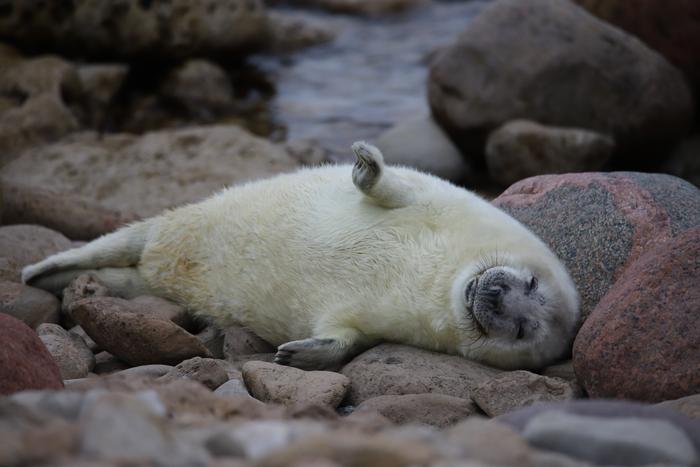Researchers at the University of Gothenburg are sounding the alarm over the threat posed to the long-term survival of the grey seal population in the Baltic Sea. Their new study, based on statistics from 20th century seal hunting and predictions of future climate change, suggests that the current hunting quotas of around 3,000 animals per year could once again push the species to the brink of extinction.
After decades of overhunting and environmental contamination, the grey seal population in the Baltic Sea plummeted from over 90,000 at the beginning of the 20th century to just 5,000 by the 1970s. Since then, the population has partially recovered, standing at around 55,000 animals today across all Baltic countries.
However, the researchers warn that this progress is now under threat. “It has taken three generations for the grey seal to recover. The seal population is now growing, but our research shows that, if the current hunting quota of 3,000 animals per year is met, the survival of the grey seal in the Baltic Sea will once again be threatened,” says Daire Carroll, Associate Researcher at the University of Gothenburg and lead author of the study published in the Journal of Animal Ecology.
The researchers created a mathematical model to simulate the grey seal population’s growth under various scenarios. “We saw that killing 3,000 seals each year always led to a decrease in seal population size, even in the most optimistic scenarios for the climate and marine environment,” Carroll explains. “Our conclusion is that the current hunting quota in the Baltic Sea is unsustainable.”
To ensure the continued recovery of the grey seal population, the researchers recommend reducing the maximum annual hunting quota to 1,900 animals. “But if there are other environmental changes that have a negative impact on population, that figure should also be reduced,” says Carroll.
The Baltic grey seal is genetically distinct from its Atlantic counterparts and faces unique challenges. Unlike seals found in the British Isles, Baltic grey seals can give birth on both drift ice and land. They are also slightly smaller on average. The population is now grappling with a warming climate and a shortage of appropriately sized prey fish.
Karin Hårding, Professor of Ecology at the University of Gothenburg and co-author of the study, emphasizes the need for a more cautious approach to hunting. “The culling of individual seals that visit or destroy fishing gear has always been allowed and is not problematic for the survival of the population. But the new licensed hunting, it is different, it risks hitting the survival of the grey seal hard.”
The researchers’ findings underscore the delicate balance between conservation and resource management. As the grey seal population has recovered, it has led to increased conflicts with the fishing industry. Finding a sustainable solution that protects both the seals and the livelihoods of those who depend on the Baltic Sea will be crucial in the years to come.


